5 Special Strategies for Teaching Tweens
Rick Wormeli is the author of eight respected books in the teaching field, and an internationally known speaker on middle-level education, classroom assessment, innovation, and teacher professionalism. Before becoming a teaching coach and consultant, Rick was an award-winning middle school teacher in Virginia for more than 20 years. This article is excerpted from The Collected Writings of Rick Wormeli (So Far).
Effective instruction for 12-year-olds looks different from effective instruction for 8-year-olds or 17-year-olds. Combine the developmental needs of typical tweens and the wildly varying needs of individuals within this age group, and you can see that flourishing as a middle grades teacher requires special skills. It’s not as overwhelming as it sounds, however. There are some common sense basics that serve students well.
The five strategies described here revolve around the principles of differentiated instruction, which does not always involve individualized instruction. Teachers who differentiate instruction simply do what’s fair and developmentally appropriate for students when the “regular” instruction doesn’t meet their needs.
Strategy 1: Teach to Developmental Needs
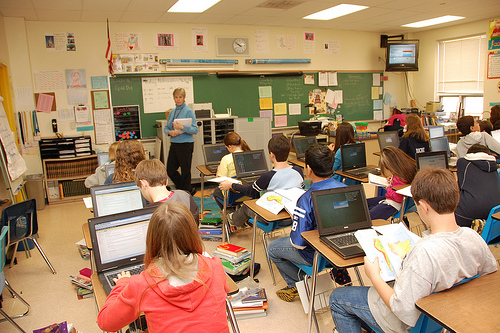
No matter how creatively we teach—and no matter how earnestly we engage in differentiated instruction, authentic assessment, and character education—the effects will be significantly muted if we don’t create an environment that responds to students’ developmental needs. Different students will require different degrees of attention regarding each of these factors.
Take tweens’ need for physical movement. It’s not enough for tweens to move between classes every 50 minutes (or every 80 minutes on a block schedule). Effective tween instruction incorporates movement every 10 to 15 minutes. So we ask all students to get up and walk across the room to turn in their papers, not just have one student collect the papers while the rest of them sit passively. We let students process information physically from time to time: for example, by using the ceiling as a massive, organizer matrix and asking students to hold cards with information for each matrix cell and stand under the proper location as indicated on the ceiling. We use flexible grouping, which allows students to move about the room to work with different partners.
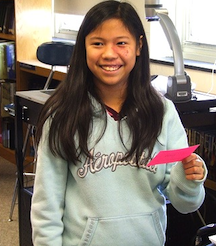
To address students’ need for self-definition, we give them choices in school projects. We help students identify consequences for the academic and personal decisions they make. We also teach students about their own learning styles. We put students in positions of responsibility in our schools and communities that allow them to make positive contributions and earn recognition for doing so. We provide clear rules and enforce them calmly—even if it’s the umpteenth time that day that we’ve needed to enforce the same rule—to help students learn to function as members of a civilized society.
Integrating developmental needs into tweens’ learning is nonnegotiable. It’s not something teachers do only if we have time in the schedule; it’s vital to tween success. As teachers of this age group, we need to apply our adolescent development expertise in every interaction. If we don’t, the lesson will fall flat and even worse, students will wither.
Strategy 2: Treat Academic Struggle as Strength
Young adolescents readily identify differences and similarities among themselves, and in their efforts to belong to particular groups, they can be judgmental about classmates’ learning styles or progress (Jackson & Davis, 2000). At this junction, then, it’s important to show students that not everyone starts at the same point along the learning continuum or learns in the same way. Some classmates learn content by drawing it, others by writing about it, and still others by discussing it—and even the best students are beginners in some things.
Unfortunately, students in non-differentiated classes often view cultural and academic differences as signs of weakness and inferiority. Good students in these classes often try to protect their reputations as being the kids who always get the problems right or finish first. They rarely take chances and stretch themselves for fear of faltering in front of others. This approach to learning rarely leads to success in high school and beyond.
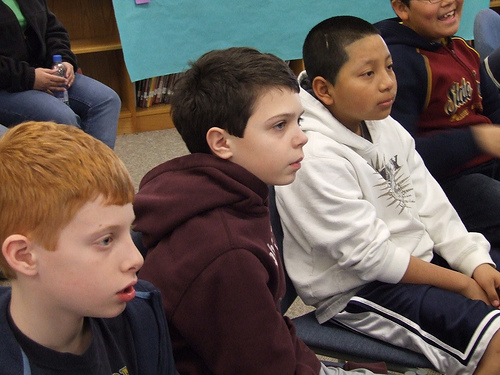
We push students to explore their undeveloped skills without fear of grade repercussions, and we frequently help students see the growth they’ve made over time.
In one of my classes, Jared was presenting an oral report on Aristotle’s rhetorical triangle (ethos, pathos, logos), and he was floundering. Embarrassed because he kept forgetting his memorized speech, he begged me to let him take an F and sit down. Instead, I asked Jared to take a few deep breaths and try again. He did, but again, he bombed. I explained that an oral report is not just about delivering information; it’s also about taking risks and developing confidence. “We’re all beginners at one point, Jared,” I explained: “This is your time to be a beginner. The worst that can happen is that you learn from the experience and have to do it again. That’s not too bad.”
After his classmates offered encouraging comments, Jared tried a third time and got a little farther before stopping his speech. I suggested that he repeat the presentation in short segments, resting between each one. He tried it, and it worked.
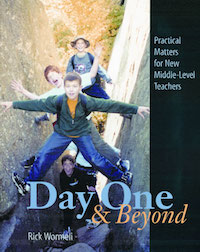
As his classmates grinned and nodded, Jared returned to the front of the room. This time, he made it through his presentation without a mistake. His classmates applauded. Jared bowed, smiled, and took his seat. His eyes watered a bit when he looked at me. Adrenalin can do that to a guy, but I hoped it was more. Everyone learned a lot about tenacity that day, and Jared took his first steps toward greater confidence (Wormeli, 1999).
Strategy 3: Provide Multiple Pathways to Standards
Differentiation requires us to invite individual students to acquire, process, and demonstrate knowledge in ways different from the majority of the class if that’s what they need to become proficient. When we embrace this approach, we give more than one example and suggest more than one strategy. We teach students eight different ways to take notes, not just one, and then help them decide when to use each technique. We let students use wide- or college-ruled paper, and we guide them in choosing multiple single-subject folders or one large binder for all subjects—whichever works best for them.
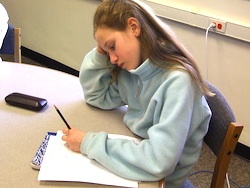
In the area of assessment, we should never let the test format get in the way of a student’s ability to reveal what he or she knows and is able to do. For example, if an assessment on Ben Mikaelsen’s novel Touching Spirit Bear (Harper Trophy, 2002) required students to create a poster showing the development of characters in the story, it would necessarily assess artistic skill in addition to assessing the students’ understanding of the novel. Students with poor artistic skills would be unable to reveal the full extent of what they know. Consequently, we allow students to select alternative assessments through which they can more accurately portray their mastery.
In differentiated classes, grading focuses on clear and consistent evidence of mastery, not on the medium through which the student demonstrates that mastery. For example, we may give students five different choices for showing what they know about the rise of democracy: writing a report, designing a Web site, building a library display, transcribing a “live” interview with a historical figure, or creating a series of podcasts simulating a discussion between John Locke and Thomas Jefferson about where governments get their authority. We can grade all the projects using a common scoring rubric that contains the universal standards for which we’re holding students accountable.
In differentiated classes, grading focuses on clear and consistent evidence of mastery, not on the medium through which the student demonstrates that mastery.
Of course, if the test format is the assessment, we don’t allow students to opt for something else. For example, when we ask students to write a well-crafted persuasive essay, they can’t instead choose to write a persuasive dialogue or create a poster. Even then, however, we can differentiate the pace of instruction and be flexible about the time required for student mastery. Just as we would never demand that all humans be able to recite the alphabet fluently on the first Monday after their 3rd birthday, it goes against all we know about teaching tweens to mandate that all students master slope and y-intercept during the first week of October in grade 7.
Thus, we allow tweens to redo work and assessments until they master the content, and we give them full credit for doing so. Our job is to teach students the material, not to document how they’ve failed. We never want to succumb to what middle-grades expert Nancy Doda calls the “learn or I will hurt you” mentality by demanding that all students learn at the same pace and in the same manner as their classmates and giving them only one chance to succeed.
Strategy 4: Give Formative Feedback
Tweens don’t always know when they don’t know, and they don’t always know when they do. One of the most helpful strategies we can employ is to provide frequent formative feedback. Tween learning tends to be more multilayered and episodic than linear; continual assessment and feedback correct misconceptions before they take root. Tweens learn more when teachers take off the evaluation hat and hold up a mirror to students, helping them compare what they did with what they were supposed to have done.
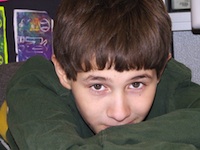
To get a quick read on students’ understanding of a particular lesson, we can use exit card activities, which are quick products created by students in response to prompts. For example, at the end of a U.S. history lesson, we might ask, “Using what we’ve learned today, make a Venn diagram that compares and contrasts World Wars I and II.” The 3-2-1 exit card format can yield rich information (Wormeli, 2005). Here are two examples:
3—Identify three characteristic ways Renaissance art differs from medieval art.
2—List two important scientific debates that occurred during the Renaissance.
1—Provide one good reason why rebirth is an appropriate term to describe the Renaissance.
3—Identify at least three differences between acids and bases.
2—List one use of an acid and one use of a base.
1—State one reason why knowledge of acids and bases is important to citizens in our community.
Strategy 5: Dare to Be Unconventional
Curriculum theorists have often referred to early adolescence as the age of romanticism: Tweens are interested in that which is novel, compels them, and appeals to their curiosity about the world (Pinar, Reynolds, Slattery, & Taubman, 2000). To successfully teach tweens, we have to be willing to transcend convention once in a while. It’s not a lark; it’s essential.
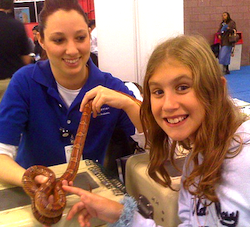
We ask students to teach some lessons, with the principal or a parent as coteacher. Students can make a video for 4th graders on the three branches of government, convey Aristotle’s rhetorical triangle by juggling tennis balls, or correspond with adult astronomers about their study of the planets. They can create literary magazines of science, math, or health writing that will end up in local dentist offices and Jiffy Lube shops.
They can learn about the Renaissance through a “Meeting of Minds” debate in which they portray Machiavelli, da Vinci, Erasmus, Luther, Calvin, and Henry VIII. The power of such lessons lies in their substance and novelty, and young adolescents are acutely attuned to these qualities.
Up in the Sky! It’s an . . . Adverb?
Ninety percent of what we do with young adolescents is quiet, behind-the-scenes facilitation. Ten percent, however, is an inspired dog and pony show without apologies. At this “I dare you to show me something I don’t know” and “Shake me out of my self-absorption” age, being unconventional is key.
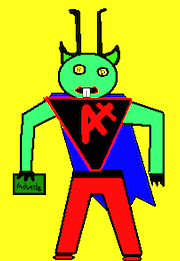
Once in a while, I’d raise my voice, Superman-style, and declare, “Remember, good citizens of Earth, what Adverb Man always says: ‘Up, up, and modify adverbs, verbs, and adjectives!’”
The next day, one of the girls on our middle school team came walking down the hallway to my classroom dressed as Pronoun Girl. One of her classmates preceded her—he was dressed as Antecedent Boy. Both wore yellow masks and had long beach towels tucked into the backs of their shirt collars as capes. Pronoun Girl had taped pronouns across her shirt that corresponded with the nouns taped across Antecedent Boy’s shirt.
It was better than Schoolhouse Rock. And the best part? There wasn’t any grade lower than a B+ on the adverbs test that Friday (Wormeli, 2001).
Navigating the Tween River
Of all the states of matter in the known universe, tweens most closely resemble liquid. Students at this age have a defined volume, but not a defined shape. They are ever ready to flow, and they are rarely compressible. Although they can spill, freeze, and boil, they can also lift others, do impressive work, take the shape of their environment, and carry multiple ideas within themselves. Some teachers argue that dark matter is a better analogy—but those are teachers trying to keep order during the last period on a Friday.
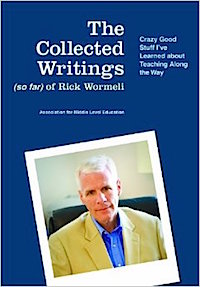
This article was first published in ASCD’s Educational Leadership magazine and reprinted in The Collected Writings of Rick Wormeli (So Far), published by the Association for Middle Level Education (2013). Used with permission. All rights reserved.
Photos: Kevin Jarrett, Creative Commons



































You said you teach your students 8 ways to take notes, I would love to know what those are. I teach 5th grade in a pretty rough area. Kids grow up fast here and I think some of your strategies would be helpful.
Thanks , Lauri
Lauri – We’re in touch with Rick Wormeli and we’ll likely post the information about note-taking in a new MiddleWeb article. Rick has also promised us an article about Summarization, the subject of his still popular 2004 book from ASCD.
This makes me so very excited to teach 7th grade English in the fall! Thanks for feeding my enthusiasm and giving me some GREAT IDEAS. :)